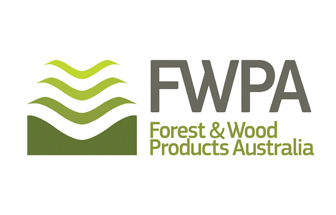TIMBER IMPORTS BRIDGE GAP AS AUSTRALIAN
MARKETS FACE DESPERATE SUPPLY SHORTAGES
GERMANY AND SWEDEN PROVIDE LONG-DISTANT SUPPORT FOR STRUCTURAL SOFTWOOD MARKETS
THE continuing buoyant domestic building and construction industry is being strongly and critically supported by the efforts of the timber importing and wholesaling sector.
General manager of the Australian Timber Importers Federation John Halkett says this effort is a remarkable testament to Australian timber importers working in collaboration, particularly with their northern hemisphere suppliers.
“While the Australian timber products market continues to be under serious supply side pressure, it would be in desperate trouble without the stellar efforts of timber importers,” Mr Halkett said.
“Notably, the supply of structural softwoods from Germany and Sweden has lifted substantially over the year as importers continue to do all they can to support the valuable, but far-distant Aussie market.
“Also, the consistent supply from Canada in the face of a strong US market is the result of great collaboration between Australian importers and Canadian companies.”
In a booming global market, continued support from international sawn wood producers and importers has been vital for Australia. Year-ending August, imports totalled 587,370 cub m, a rise of 3.6% on the prior year.
The continuation of import supply, and some stability and growth for a few grades, is all the more significant in a period when supply disruptions are so dramatic and timelines are difficult to organise. The tyrannies of distance have played havoc with supply chains into Australia, making the decision to provide supply all the more challenging, especially with freight costs rising by the moment
So strong has supply been that August 2021 saw imports hit their second highest level in a decade for the eighth month of the year, with imports totalling 67,081 cub m, up 19% on the prior August.
“Of course, one month does not a story make,” Mr Halkett said. “So here we can see the extent of the monthly and annual uplift in imports that commenced around April 2020 as imports fell to their lowest point in the decade.”
He said it was important to recall that imports were trending down at that time because the Australian economy was very soft and housing demand was only just beginning to see some unstimulated growth. Then came the stimulus. “Those 18 months ago seem like years now, of course.”
Over time, the growth in imports on an annual basis has been consistent. The cost of supply in a global boom – just as observed for the international log market – is higher prices.
Prices for all imports are higher. In August 2021 alone, weighted average prices lifted 12.7% to reach AUDFOB696 a cub m. These are not landed prices, they are just the goods price without the incredible and off-the-wall costs of shipping included to get the goods to Australia, let alone the additional costs of land-freight to get the goods into warehouses.
In that context and with the additional costs in mind, these are massive price increases. Its importance is that it is structural timber and it makes up between 35% and 40% of all Australia’s imports of sawn softwood.
Monthly volumes have been increasing steadily for the last year, supporting an annual volume that has grown like a mountain climber to reach 202,897 cub m year-ended August 2021, up 87.5% on the prior year.
While that is amazing, charts show the free-climbing rock face of price increases that saw, in August alone, the average import price lift 39% to book a seventh successive monthly record and reach AUDFOB 665 a cub m.
A year ago, the weighted average price was just 338 cub m.









